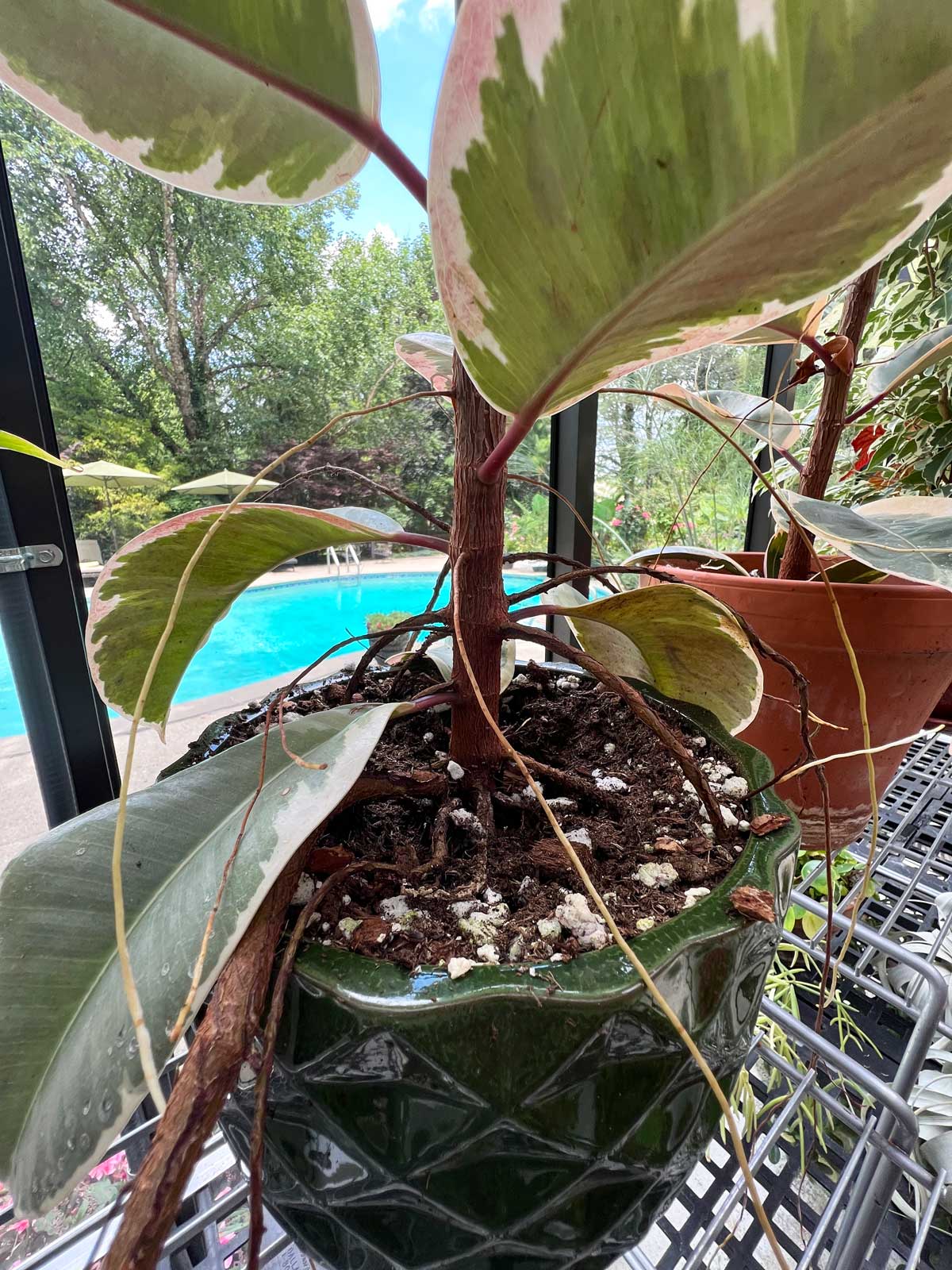
A few of the hyperlinks on this put up could also be affiliate hyperlinks.
Do you know that rubber vegetation (Ficus elastica) can develop aerial roots? Many sorts of vegetation develop aerial roots they usually can serve completely different capabilities. Preserve studying to study all about rubber plant aerial roots, why they develop, and what their objective is.
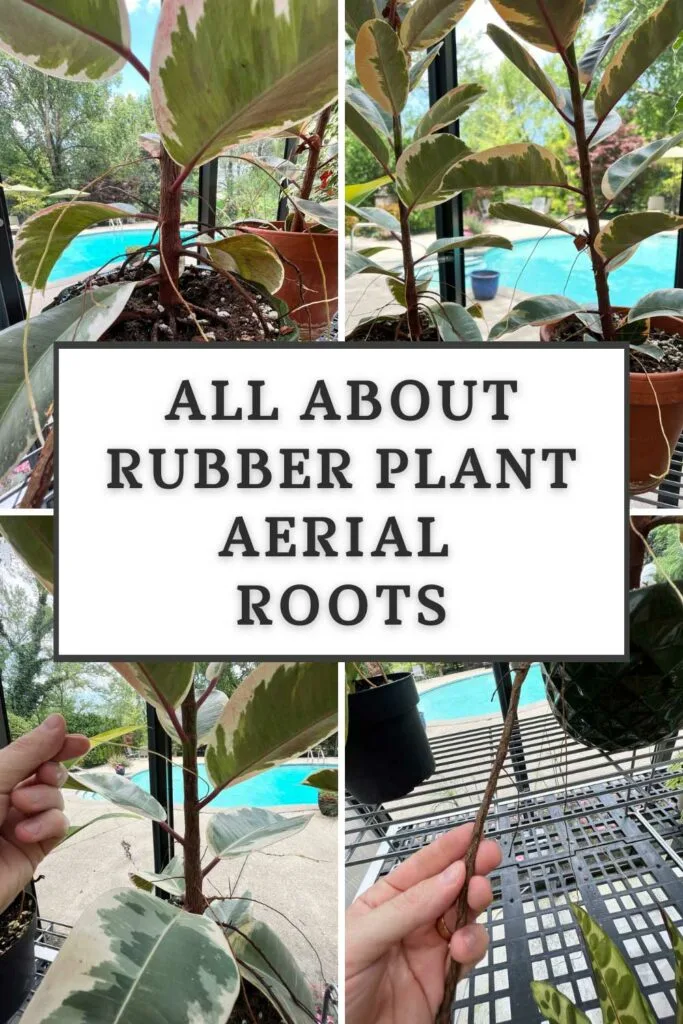
Crops can develop aerial roots for plenty of causes.
Take into consideration vegetation like Monstera deliciosa, Pothos, and lots of Philodendron varieties that develop aerial roots to climb up timber or different assist buildings. They use the tree for assist as they climb, and likewise to soak up extra water and vitamins.
Different vegetation like Tillandsia (air vegetation) use their roots primarily to connect onto timber, they usually soak up most of their water and vitamins by their foliage by modified scales known as trichomes.
Rubber plant aerial roots develop a little bit in a different way.
RUBBER PLANT AERIAL ROOTS
HOW THEY GROW IN NATURE

Rubber vegetation (Ficus elastica) are enormous timber in nature they usually can simply develop over 100 ft tall. The tree trunk and branches ultimately develop aerial roots. The aerial roots develop downwards till they attain the soil.
As these roots develop, they thicken up and nearly flip into trunks, they usually find yourself supporting the heavy branches of the tree.
In some elements of India, they’ll truly create a residing bridge out of the aerial roots of Ficus elastica!
The roots are lengthy and versatile and are stretched over a river. Because the roots develop, they’ll strengthen over time and ultimately maintain the load of human being strolling throughout.
IF MY RUBBER PLANT DOESN’T HAVE AERIAL ROOTS, IS THERE SOMETHING WRONG?
Completely not! For the rubber vegetation that I’ve grown inside my house, they’ve by no means had any aerial roots in any respect.
It doesn’t imply that the vegetation will not be wholesome. So why don’t they develop indoors?
WHAT CAUSES THEM TO GROW?
I do have a few rubber vegetation in my greenhouse and people did begin to develop aerial roots, a few of which grew a number of ft lengthy slightly shortly!
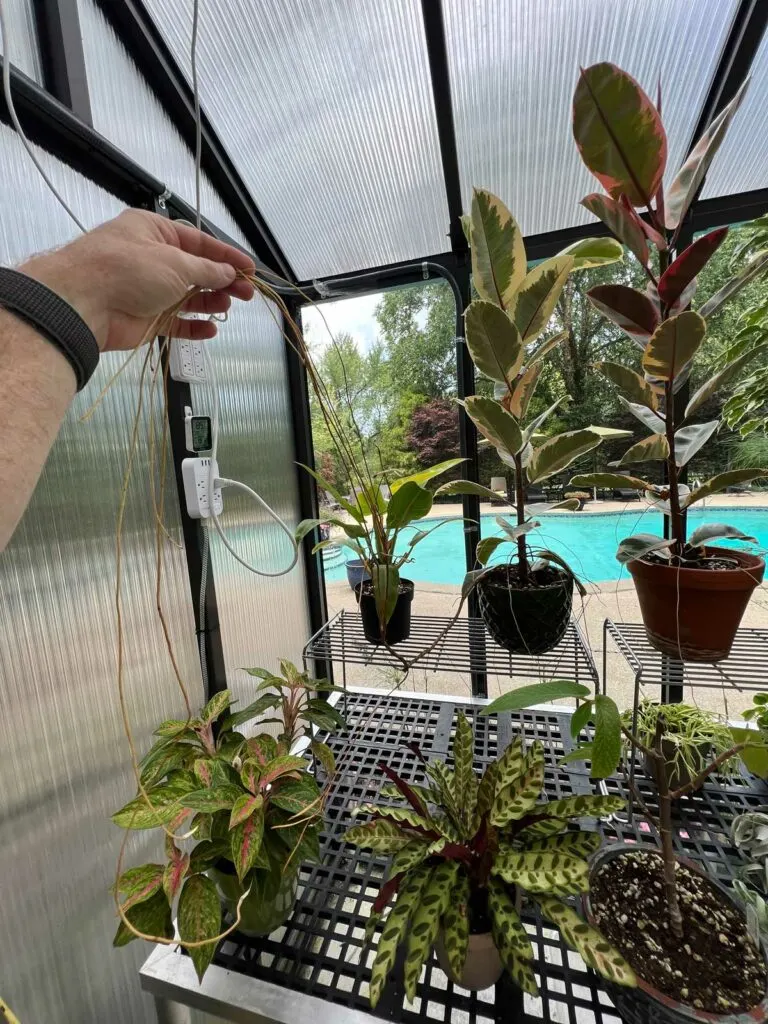
The hotter and humid situations within the greenhouse brought about the aerial roots to develop extensively.
On account of heating and cooling methods inside a median house, humidity ranges are sometimes too low to encourage aerial roots to develop on rubber vegetation.
When they’re simply beginning to develop, mine had been a light-weight, pale coloration, just like the aerial root that I’m holding in my hand beneath.
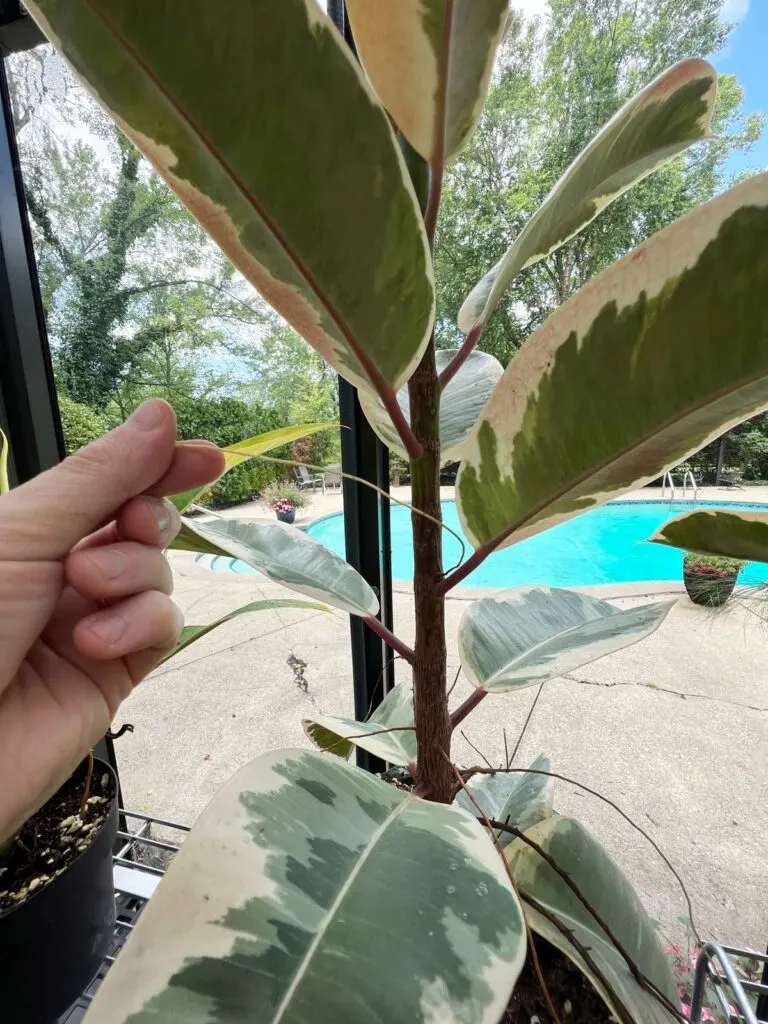
The aerial roots will develop proper out of the trunk of the plant, they usually can develop fairly a number of.
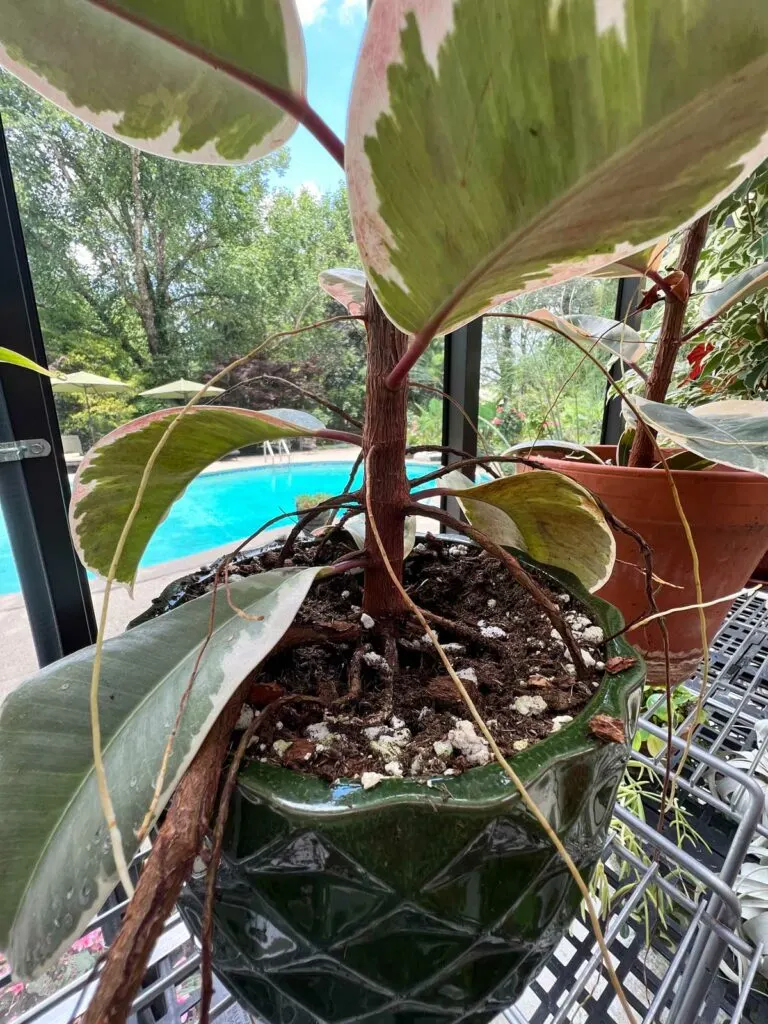
As they develop longer and age, they’ll kind a bark on them and get fairly thick.
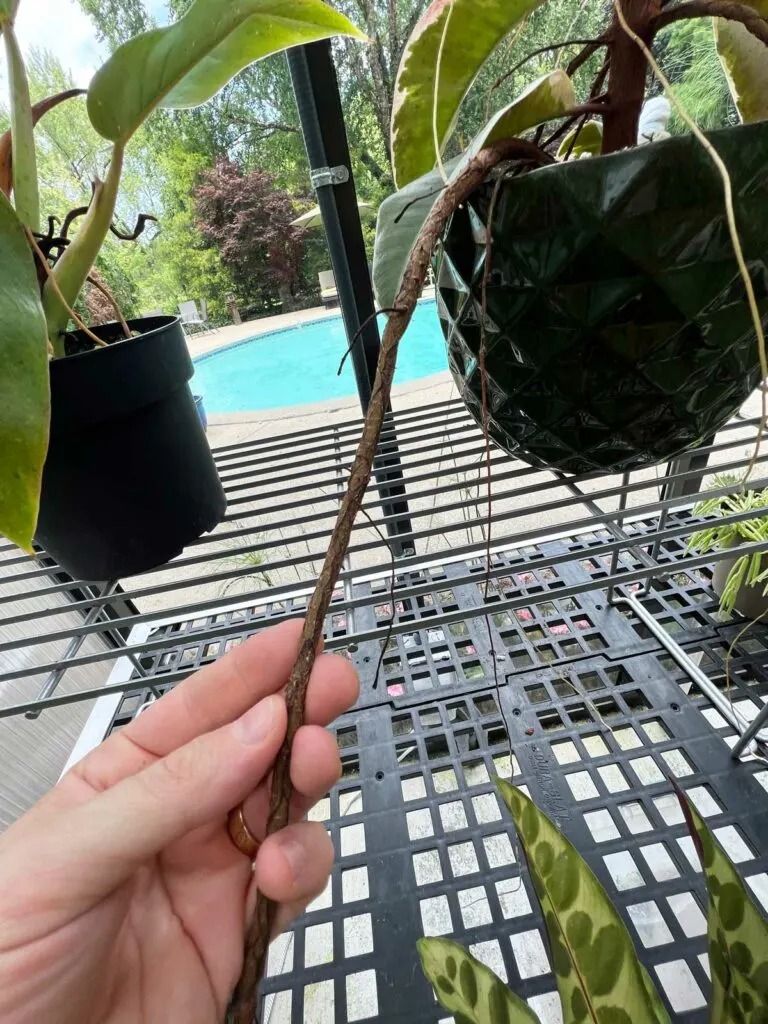
WHAT DO YOU DO WITH THEM?
One factor you are able to do is direct the rubber plant aerial roots onto the floor of the potting combine. They will develop into the soil, similar to they do in nature.
For rubber vegetation, should you don’t just like the appears of the aerial roots, you possibly can safely trim them, or lower them off utterly. You’ll not be harming your vegetation!
A phrase of warning although. This doesn’t imply that you need to trim aerial roots off of all of your vegetation. The one plant that you need to NOT trim aerial roots off of are Phalaenopsis orchids.
Phalaenopsis, or moth orchids, use these roots to soak up moisture and vitamins, they usually additionally photosynthesize as effectively. These aerial roots do develop readily on these vegetation, and you need to mist them often in order that they don’t dry up.
When it’s time to repot your orchid, you possibly can gently bury the aerial roots inside the bark combine or sphagnum moss so you possibly can extra simply meet their moisture wants.
I hope you’ve loved this put up on rubber plant aerial roots. Do you’ve gotten any aerial roots in your rubber plant? Remark beneath. I’d love to listen to!